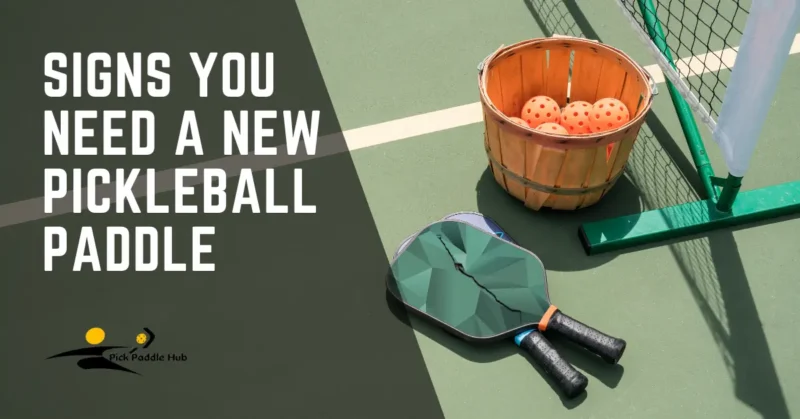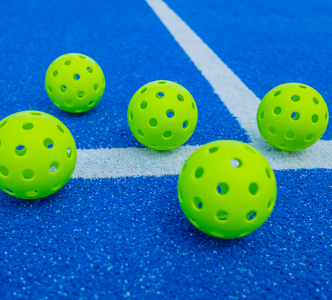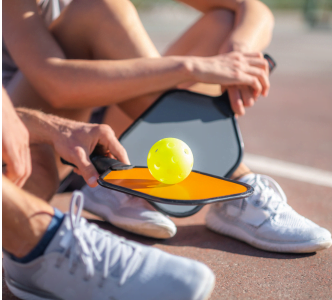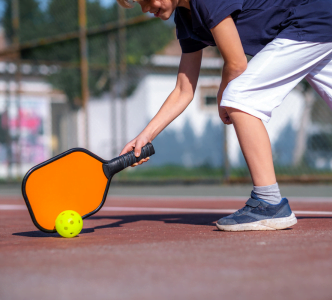Hey there, fellow pickleball enthusiasts! As a player who’s navigated the courts from beginner bumps to seasoned smashes, I’ve learned a thing or two about the life cycle of a pickleball paddle.
Whether you’re just starting your pickleball journey or you’ve been hitting the courts for a while, knowing when to replace your pickleball paddle is crucial for keeping your game at its best.
It’s not just about wear and tear; it’s about ensuring you’re always playing with equipment that matches your growing skills and style.
In this guide, I’ll share the main signs that indicate it’s time to bid farewell to your old friend and welcome a new paddle into your pickleball family.
From decreased performance to visible damage, we’ll cover the essentials, blending technical advice with my personal experiences on the court.
Let’s dive into the signs that it’s time for a paddle upgrade, ensuring you’re well-equipped to make that important decision.
When to Replace Your Pickleball Paddle? Paddle Talk signs
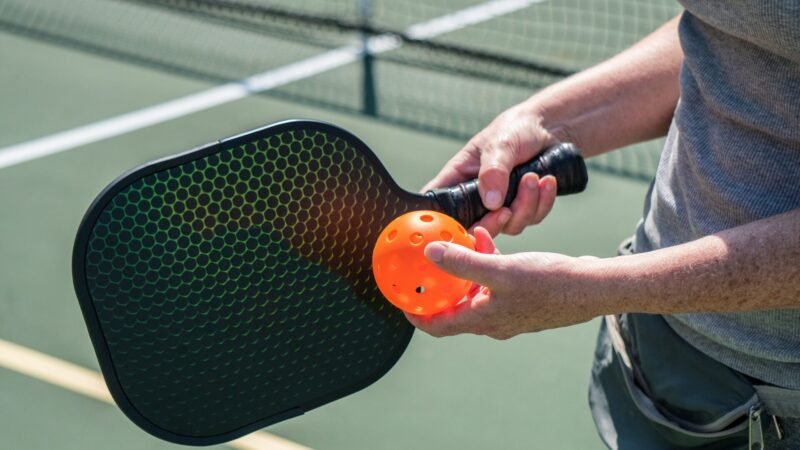
As a pickleball enthusiast myself, I understand how crucial it is to have the right equipment in tip-top shape. Recognizing when it’s time to replace your paddle can make a huge difference in your game. Below are key paddle talk signs to watch out for:
Delamination: Understanding the Signs
Delamination occurs when the layers of your paddle begin to separate. This not only affects the paddle’s appearance but significantly impacts your performance on the court.
When a paddle delaminates, it loses its original structure and stiffness, leading to a decrease in power and precision. If you notice bubbling or peeling on the surface, it’s a clear sign that your paddle is delaminating and potentially compromising your gameplay.
Wear and Tear: When It’s More Than Just Cosmetic
Scratches and cracks on your paddle might seem like minor issues at first glance, but they can have a profound effect on how the paddle performs. Cracks, especially, can alter the paddle’s weight distribution and aerodynamics, making it difficult to control your shots with the same accuracy as before. While a well-loved paddle shows signs of use, when these marks start to influence your game, it’s time to consider a replacement.
Changes in Performance: Recognizing the Subtle Signs
Sometimes, the signs that your paddle needs replacing are not as visible. You might notice a decrease in control or power during play, which can indicate your paddle’s core materials have degraded over time. This degradation can affect the paddle’s responsiveness, making it challenging to execute precise shots or powerful serves. If your game seems off despite your skills and efforts, it might be your paddle telling you it’s time for an upgrade.
Paying attention to these signs can help you maintain your competitive edge and enjoy your pickleball experience to the fullest. Remember, a well-functioning paddle is key to both enjoying the game and improving your skills.
What Affects the Lifespan of Pickleball Paddle?
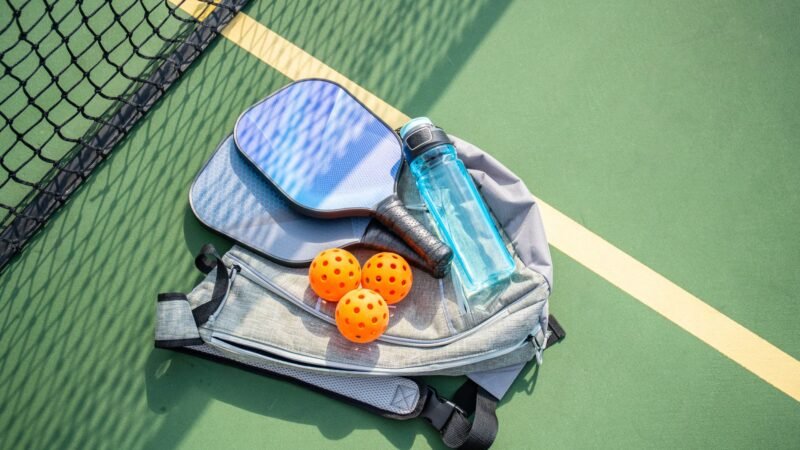
When we talk about the lifespan of a pickleball paddle, it’s essential to consider the materials and construction that go into making it. A paddle’s durability isn’t just about the brand or the price; it’s deeply rooted in its anatomy.
From the core materials like polymer, Nomex, or aluminum, to the surface materials such as graphite or composite, each element plays a crucial role in determining how long your paddle will last. Moreover, the build quality, including the bonding of the surface to the core and the edge guard’s integrity, significantly influences its resilience to wear and tear.
Environmental factors, usage frequency, and the player’s style also contribute to the overall lifespan of the paddle. By understanding these aspects, players can make informed choices about their equipment and manage expectations regarding durability.
Average Lifespan of Pickleball Paddle
There are difference between pickleball paddles, but setting realistic expectations about the lifespan of your pickleball paddle is crucial for every player. On average, a well-made paddle can serve you well for 1 to 5 years for normal play and if you play regularly then it can serve you 1 to 3 years.
However, this range is influenced by several variables, including the frequency of play, the level of care, and the paddle’s construction quality. Players who hit harder or play frequently may find their paddles showing signs of wear sooner than recreational players who hit the courts less often.
Additionally, how you care for your paddle—storing it properly, cleaning it regularly, and avoiding extreme temperatures—can extend its life. Understanding these factors allows players to anticipate when it might be time for a replacement, ensuring they always have a reliable paddle in hand for their games.
How to Tell if Pickleball Paddle is Dead?
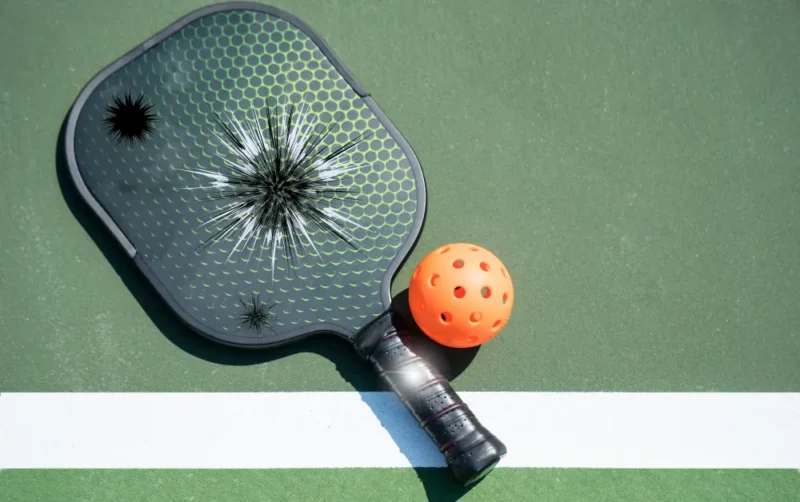
Telling if your pickleball paddle has reached the end of its life, often referred to as being “dead,” involves noticing several key signs that indicate a decline in the paddle’s performance. Here’s a concise guide to help you identify if your paddle is dead:
- Reduced Sweet Spot: If you notice that shots you used to hit solidly with the center (“sweet spot”) of the paddle now feel less powerful or less precise, it may be a sign that the paddle’s core materials have broken down.
- Sound Changes: Pay attention to the sound your paddle makes on impact. A dead paddle often produces a dull, less resonant sound compared to the crisp pop of a healthy paddle. Changes in sound can indicate internal damage or deterioration.
- Decreased Power and Control: If you’re exerting the same amount of effort but your shots are coming up shorter than usual, or if you’re struggling to place shots with the same accuracy, the paddle might be losing its effectiveness.
- Visible Wear and Tear: While some cosmetic damage is normal, significant wear such as deep scratches, cracks in the face, or delamination (where the surface material starts to peel away from the core) can impair the paddle’s performance.
- Weight Changes: A change in the paddle’s weight, feeling either heavier or lighter, can suggest that internal materials have degraded or that the paddle has sustained damage that’s affecting its balance and swing.
- Vibration: An increase in vibration or a change in how the paddle feels in your hand upon impact could indicate structural issues within the paddle, reducing its ability to absorb shock and impacting your play.
Caring for Your Pickleball Paddle
Maintaining your pickleball paddle properly can significantly extend its lifespan and ensure optimal performance during play. Here’s how you can care and clean your paddle to keep it in top condition:
Maintenance Tips to Extend the Life of Your Paddle
| Tips | Details |
|---|---|
| Store Properly | Keep your paddle in a cool, dry place away from direct sunlight or extreme temperatures. |
| Use a Paddle Cover | Protect your paddle from scratches, dings, and dust with a quality paddle cover. |
| Avoid Ground Contact | Prevent dropping or hitting the paddle against the ground to avoid cracks, chips, or damage. |
| Inspect Regularly | Check your paddle for signs of damage like delamination, cracks, or edge wear to prevent further issues. |
Cleaning Tips for Your Pickleball Paddle
| Tips | Details |
|---|---|
| Use Mild Soap and Water | Gently wipe the surface with a soft cloth, mild soap, and water to remove dirt and oils. |
| Avoid Harsh Chemicals | Do not use chemicals, abrasives, or solvents that can damage the surface material. |
| Dry Properly | Use a soft, dry cloth to remove excess moisture and ensure the paddle is completely dry before storing. |
| Regular Cleaning | Clean your paddle regularly, especially after playing in dusty conditions, to maintain its grip and response. |
What to Do with Old Pickleball Paddles?
When it’s time to retire an old pickleball paddle, you don’t have to throw it away. Donating your used paddles can greatly benefit beginners and the broader community. Here are some thoughtful suggestions on how to give your old paddles a new life:
- Local Clubs and Community Centers: Many local pickleball clubs, community centers, or YMCA branches welcome the donation of sports equipment. Your old paddle can help someone take their first swing at pickleball.
- Schools: Schools with physical education programs might be interested in adding pickleball to their curriculum. Donating paddles can introduce the sport to many young players.
- Charities: Look for charities that promote physical activity and donate your paddles to them. They could use these paddles in their programs to encourage people of all ages to stay active and healthy.
- Social Media Giveaways: If you’re active in online pickleball communities or forums, consider organizing a giveaway. This can be a great way to support players who might need equipment to start playing.
- Recycle: If the paddle is beyond usable condition, check if its materials are recyclable. Some components of the paddle might be accepted by local recycling programs.
By choosing to donate your old pickleball paddles, you’re not only clearing space in your home but also supporting and growing the pickleball community. It’s a win-win for everyone involved.
Conclusion
Understanding when to replace your pickleball paddle, recognizing the signs of wear, and knowing how to properly care for your equipment are essential skills for any player, beginner or seasoned.
By being mindful of delamination, wear and tear, and changes in performance, you can ensure your paddle serves you well for as long as possible.
Regular maintenance and proper cleaning are key to extending the life of your paddle, while also keeping it in peak condition for every game. And when it’s finally time to retire your old paddle, consider donating it to beginners or community programs, where it can continue to make an impact on the sport.
Embracing these practices not only enhances your playing experience but also contributes to the sustainability and growth of the pickleball community.
FAQs
How often should I replace my pickleball paddle?
The need to replace your paddle depends on how frequently you play and the level of care you provide. On average, a paddle can last between 1 to 5 years. Regularly inspect your paddle for signs of wear and performance changes to determine when it’s time for a replacement.
What is the impact of environmental conditions on my pickleball paddle’s lifespan?
Environmental factors such as extreme temperatures, humidity, and prolonged exposure to sunlight can significantly affect your paddle’s durability. Storing your paddle in a temperature-controlled environment and avoiding leaving it in hot cars or direct sunlight can help protect it from damage.
Can the type of ball I use affect my paddle’s condition?
Yes, using high-quality pickleball balls can reduce the wear and tear on your paddle. Lower-quality balls may be harder or less consistent, potentially causing more stress and damage to the paddle surface over time.
Is there a difference in lifespan between graphite and composite paddles?
Graphite paddles are known for their lightweight and responsive nature, while composite paddles offer more power and durability. Generally, composite paddles may have a slightly longer lifespan due to their robust construction, but this can vary based on playing style and maintenance.
Can the grip of my paddle affect its lifespan?
While the grip itself doesn’t directly influence the paddle’s structural lifespan, a worn-out grip can affect playability and comfort, potentially leading to incorrect handling that can indirectly cause premature wear or damage.

